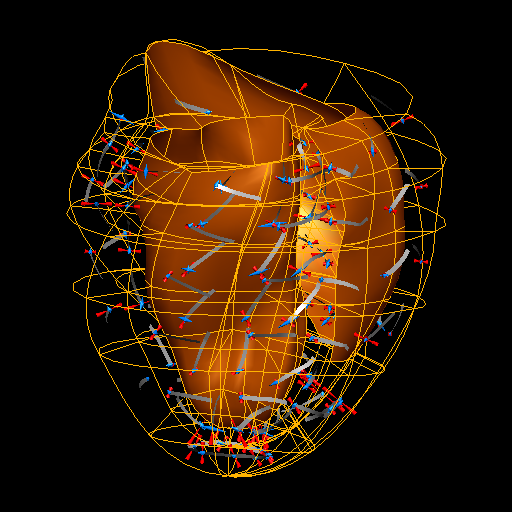Location: Deforming Heart @ b51addc2f65f / index.html
- Author:
- Randall Britten <r.britten@auckland.ac.nz>
- Date:
- 2010-10-15 16:56:58+13:00
- Desc:
- Demonstration of FieldML 0.2 beta format by Richard Christie, Caton Little and Randall Britten. FieldML 0.2 beta does have support for time varying DOFs, however, none of the FieldML 0.2 capable software has support for time varying DOFs read from FieldML, hence a workaround is used for this demonstration, and is intended to be fixed in the near future.
- Permanent Source URI:
- http://models.cellml.org/workspace/deformingheart/rawfile/b51addc2f65f56bddfb3b6964dd7d2dffdb53081/index.html
Finite elasticity theory combined with finite element analysis provides the framework for analysing ventricular mechanics during the filling phase of the cardiac cycle, when cardiac cells are not actively contracting. The orthotropic properties of the passive tissue are described here by a "pole-zero" constitutive law, whose parameters are derived in part from a model of the underlying distributions of collagen fibres. These distributions are based on our observations of the fibroussheet laminar architecture of myocardial tissue. We illustrate the use of high order (cubic Hermite) basis functions in solving the Galerkin finite element stress equilibrium equations based on this orthotropic constitutive law and for incorporating the observed regional distributions of fibre and sheet orientations. Pressure-volume relations and 3D principal strains predicted by the model are compared with experimental observations. A model of active tissue properties, based on isolated muscle experiments, is also introduced in order to predict transmural distributions of 3D principal strains at the end of the contraction phase of the cardiac cycle. We end by offering a critique of the current model of ventricular mechanics and propose new challenges for future modellers.

To launch the model, please select 'Zinc Viewer' under navigation on the right.

